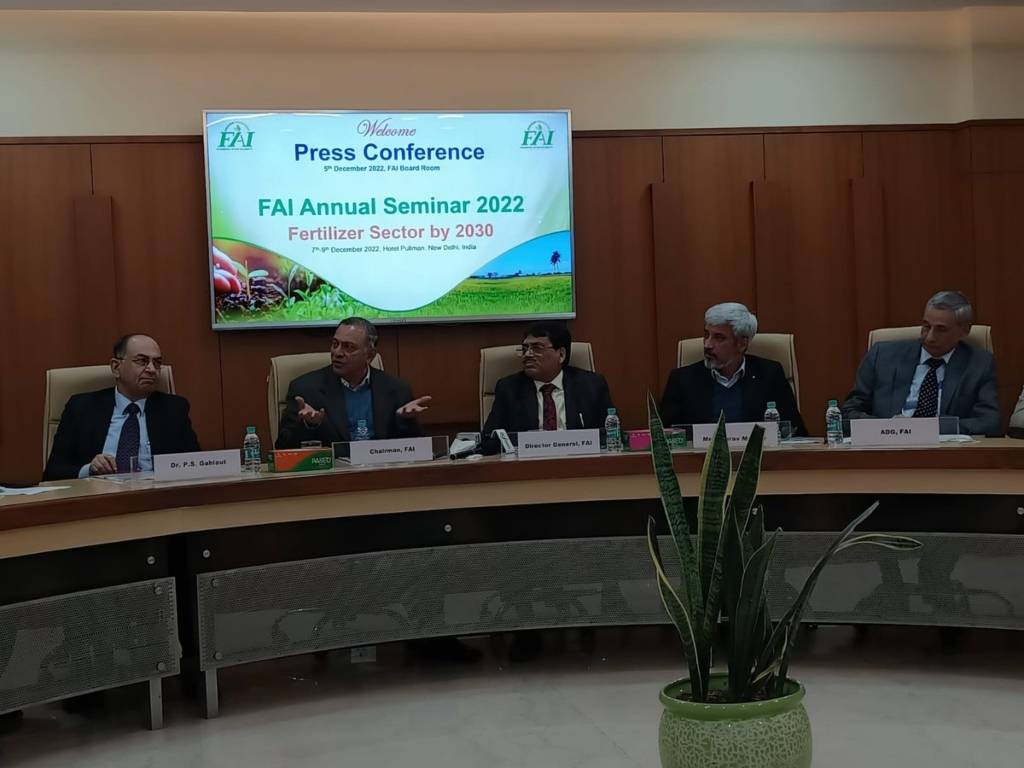
With rising commodity costs, the world is experiencing a food, fuel, and energy crisis that is unprecedented. Global fertilizer, agricultural, and industrial policies have been impacted by growing concerns about climate change and the emphasis on reducing greenhouse gas emissions.
At the Conference of Parties (COP) 26 in Glasgow, India also made time-bound pledges to attain specific targets by 2030 and make progress toward achieving net zero emissions by 2070. The goals for 2030 include building 500GW of non-fossil energy capacity, obtaining 50% of one's energy needs from renewable sources, cutting carbon emissions by 1 billion tonnes, and lowering the carbon intensity of the Indian economy by 45% from 2005 levels. The fertilizer industry will also need to give its fair share to this endeavor.
Accordingly, FAI Annual Seminar 2022 has been devoted to the theme of ‘Fertilizer Sector by 2030’. The seminar was inaugurated by the Minister for Chemicals & Fertilizers and Heath & Family Welfare Dr. Mansukh Mandaviya on December 7.
Know Fertilizer Situation in India:
With the exception of NP/NPK complex fertilizers, production of all main fertilizers grew from April to October 2022. During April-October 2022, urea, DAP, and SSP production all increased relative to April-October 2021 by 16.0%, 14.2%, and 9.2%, respectively. NP/NPK complex fertilizer production fell by 5.2% during the course of the time period.
In comparison to April–October 2021, imports of DAP and NP/NPK complex fertilizers grew by 45.2 and 76.1 percentage points, respectively. However, during the same time period, imports of urea and MOP decreased by 12.9% and 7.3%, respectively.
Key Issues Faced by the Fertilizer Industry in the Country:
The urea industry's viability is compromised by the delay in approving the minimum fixed cost and the absence of fixed cost revisions since 2002–2003, with the exception of a minor increase permitted under the Modified NPS–III policy since 2014. The fixed cost of urea has increased dramatically between 2002–2003 and is now far more than the amount being reimbursed. It disregards significant expenditures made in recent years for plant reliability and energy reduction projects. Similar to this, numerous urea units' performance has been hampered by changes to energy consumption standards made in 2018 over 2015.
The government has granted another extension of the 2015 energy standards for 14 urea units that have not yet met the 2018 standards for two and a half years, till March 2023. The P&K Fertilizer Units have been arguing for the NBS policy-allowed exclusion of indirect taxes from the calculation of MRP's reasonableness and the restoration of market-determined MRP. A vast discourse on these issues will take place in the seminar.
The Agenda Ahead
According to a draft published by the FAI, the Indian fertilizer sector will begin employing green ammonia in the production of P & K complex fertilizers once the government has put the necessary legislation in place. It will then gradually increase its use in order to replace around 3 million tonnes of traditional ammonia by 2030. Through conventional channels, one tonne of ammonia releases two tonnes of carbon dioxide. By 2030, 3 million tonnes of conventional ammonia will be replaced with green ammonia, resulting in a two-fold reduction in carbon emissions.
To ensure that Indian farmers have access to sufficient quantities of fertilizer nutrients, the industry is collaborating with the government. The government's obligations to minimize greenhouse gases and gradually boost the use of green ammonia in the production of complex fertilizers are also being met by this initiative, it further added.
















